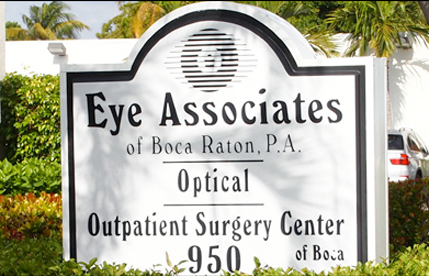Surgical Services
Cataract Surgery
A cataract is a progressive clouding of the eye’s natural lens that interferes with light passing through to the retina.
In your parent’s or grandparent’s day, cataract surgery was considered risky, required a lengthy hospital stay and was usually postponed for as long as possible. Today, cataract surgery is performed on an out-patient basis and takes only a few minutes. Patients can then go home and rest in comfort and avoid the inconvenience and expense of staying in a hospital.
Glaucoma
Glaucoma is a treatable disease (if discovered early enough) of the eyes that results from the normal fluid pressure inside the eyes slowly rising beyond what is normal.
This pressure build-up can lead to vision loss or even blindness. It is very important that you have a professional check your eyes once a year.

Functional and Cosmetic Plastic Surgery
Achieve a more youthful look and improve your vision at the same time. Dr. Mark Weiner, performs a safe and effective procedure called blepharoplasty that not only eliminates “droopy eyelids” but can in many cases improve your peripheral vision as well. Eyelid surgery is performed in our state-of-the-art outpatient surgery center. Recovery and returning to routine activities is fast with little or no “downtime” at all.
Look at the difference Eyelid Surgery can make…

Before & After Photo of Patient

Pediatric Ophthalmology
Children experience a variety of eye problems, many quite distinct from adult eye diseases. Pediatric ophthalmologists are specially trained to manage the following disorders: Infections (conjunctivitis), Strabismus, Amblyopia, Blocked tear ducts, Ptosis, Retinopathy of prematurity, Nystagmus, Visual inattention, Pediatric cataracts, Pediatric glaucoma, Congenital malformations, Orbital tumours, myopia, astigmatism, Accommodative insufficiency, Convergence insufficiency, asthenopia and evaluation of visual issues in education, including dyslexia and attention deficit disorder.
Neuro-ophthalmology
Including optic neuritis, optic neuropathy, papilledema, ocular myasthenia gravis, brain tumors or stroke affecting vision, idiopathic intracranial hypertension, unexplained visual loss, headaches, diplopia, blepharospasm or hemifacial spasm.
Retinal Diseases
Retinal diseases can affect the area of the retina that serves your central vision (the macula and the fovea at the center of the macula). Many retinal diseases share common symptoms and treatments, but each has unique characteristics. The goal of retinal disease treatments is to stop or slow disease progression and preserve, improve or restore vision.

Corneal Disease
If the cornea of your eye becomes damaged through disease, infection, or injury, the resulting scars can interfere with vision by blocking or distorting light as it enters the eye. The term “corneal disease” refers to a variety of conditions that affect mainly the cornea. These include infections, degenerations, and many other disorders of the cornea that may arise mostly as a result of heredity.
Lasik and Refractive Surgery

Lasik, commonly referred to as laser eye surgery, is a type of refractive surgery for the correction of myopia, hyperopia, and astigmatism.
LASIK stands for Laser-Assisted In Situ Keratomileusis and is a procedure that permanently changes the shape of the cornea, the clear covering of the front of the eye, using an excimer laser. A mechanical microkeratome (a blade device) or a laser keratome (a laser device) is used to cut a flap in the cornea. A hinge is left at one end of this flap. The flap is folded back revealing the stroma, the middle section of the cornea. Pulses from a computer-controlled laser vaporize a portion of the stroma and the flap is replaced.
Facial Cosmetics
 BOTOX® Cosmetic is a prescription medicine that is injected into muscles and used to improve the look of moderate to severe frown lines between the eyebrows (glabellar lines) in people 18 to 65 years of age for a short period of time (temporary).
BOTOX® Cosmetic is a prescription medicine that is injected into muscles and used to improve the look of moderate to severe frown lines between the eyebrows (glabellar lines) in people 18 to 65 years of age for a short period of time (temporary). JUVÉDERM® is the smooth gel filler that your doctor uses to instantly smooth away wrinkles around your mouth and nose. With just one treatment, you’ll get smooth and natural-looking results that last up to a year.
JUVÉDERM® is the smooth gel filler that your doctor uses to instantly smooth away wrinkles around your mouth and nose. With just one treatment, you’ll get smooth and natural-looking results that last up to a year. LATISSE® is a prescription treatment for hypotrichosis (inadequate or not enough lashes) to grow eyelashes longer, fuller, darker.
LATISSE® is a prescription treatment for hypotrichosis (inadequate or not enough lashes) to grow eyelashes longer, fuller, darker.












